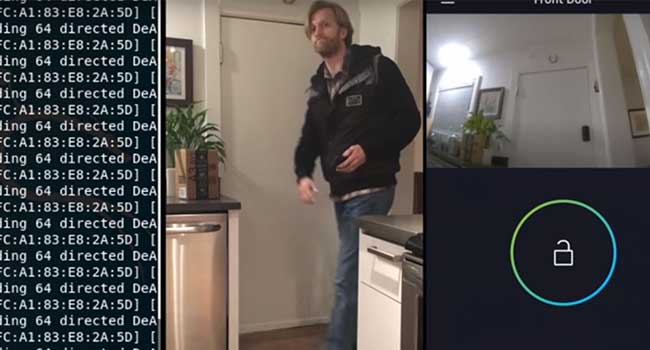
Vulnerability in Amazon Key's Camera Allows Couriers Back in Your House
Amazon has addressed the hack and will be rolling out an update next week.
- By Sydny Shepard
- Nov 17, 2017
When Amazon rolled out Amazon Key last month, the opinions were mixed at best. While some people were happy to see a system that would cut out the Porch Pirates in their lives, others were anxiety-ridden by the thought of a stranger having access to their home while they are not present.
The latest news from security researchers is not going to calm those who already thought Amazon Key wasn't a good idea. Researchers found that the camera can be disabled and frozen from a program run from any computer within Wi-Fi range, according to Wired.
If the attack happens to a customer, they would only be able to see a closed door though the Cloud Cam and smartphone app, even though someone has opened the door and gone inside - a vulnerability that may allow rouge couriers to steal from Amazon Key customers.
"The camera is very much something Amazon is relying on in pitching the security of this as a safe solution," Ben Caudill, the founder of Rhino Security Labs told Wired. Researchers from the security firm uncovered the Amazon Key attack and replicated it. "Disabling that camera on command is a pretty powerful capability when you’re talking about environments where you’re relying heavily on that being a critical safety mechanism.”
A video demonstration of the attack shows an attacker's screen, the live view of an apartment and the view from the Amazon Key smartphone app. Once the courier walks into the home, he sets the package down and then leaves. The attackers screen then lights up with code and the camera signal is blocked allowing the courier to reenter the home and do, basically whatever he wants. The camera never indicates to the user that the camera was at risk or its signal was blocked. Instead, the customer remains unaware of the intrusion.
This hack does not have to directly involve couriers with Amazon, a criminal could wait for a courier to leave and then access the home afterwards by triggering a deauthorization command as the courier is leaving and cause Amazon Key to go offline, which would stop the door from locking.
Amazon has responded to the issue saying it will notify customers when the camera is offline for an extended period of time.
"Later this week we will deploy an update to more quickly provide notifications if the camera goes offline during delivery,” it said in a statement. “Every delivery driver passes a comprehensive background check that is verified by Amazon before they can make in-home deliveries, every delivery is connected to a specific driver, and before we unlock the door for a delivery, Amazon verifies that the correct driver is at the right address, at the intended time."
About the Author
Sydny Shepard is the Executive Editor of Campus Security & Life Safety.